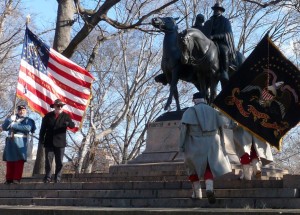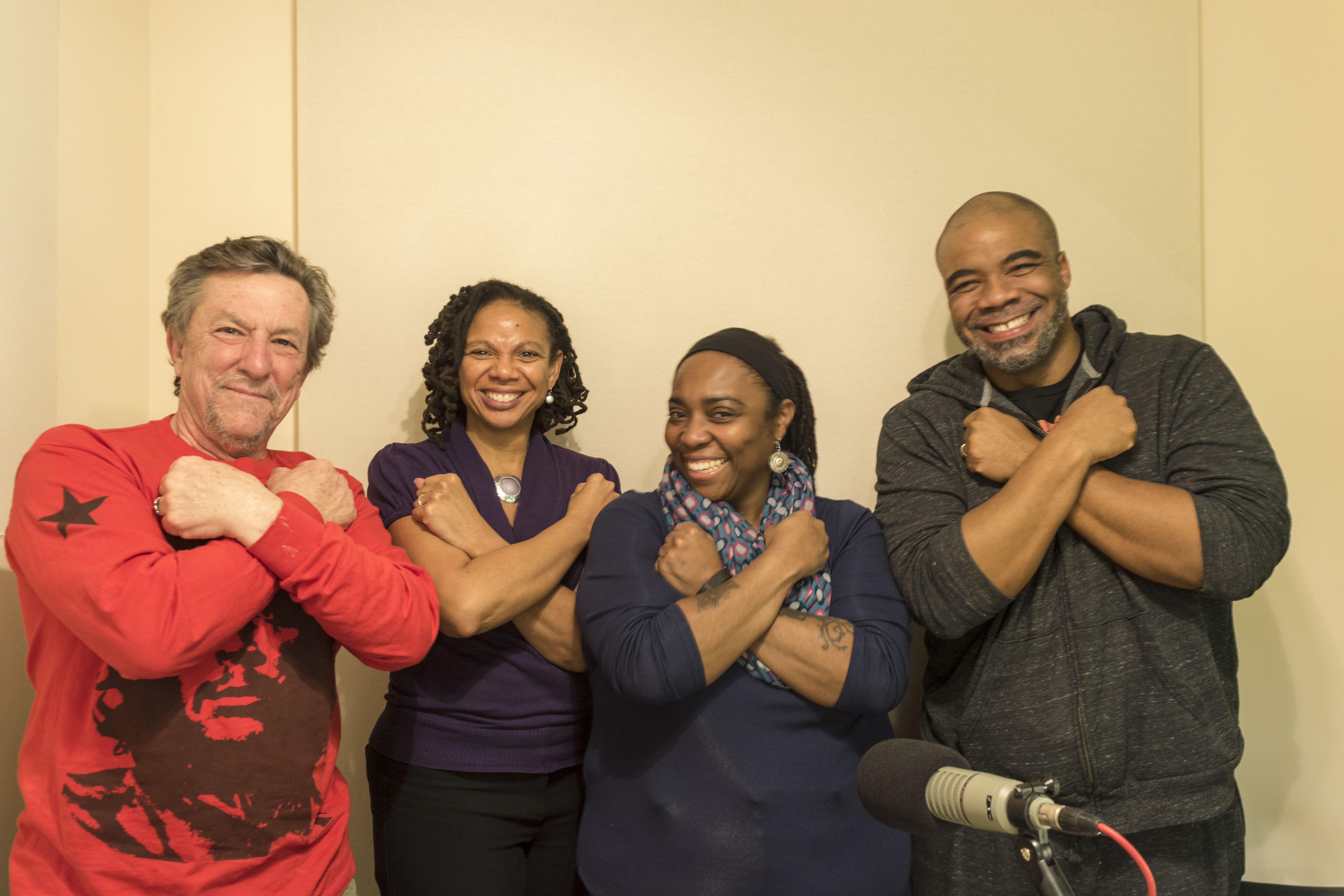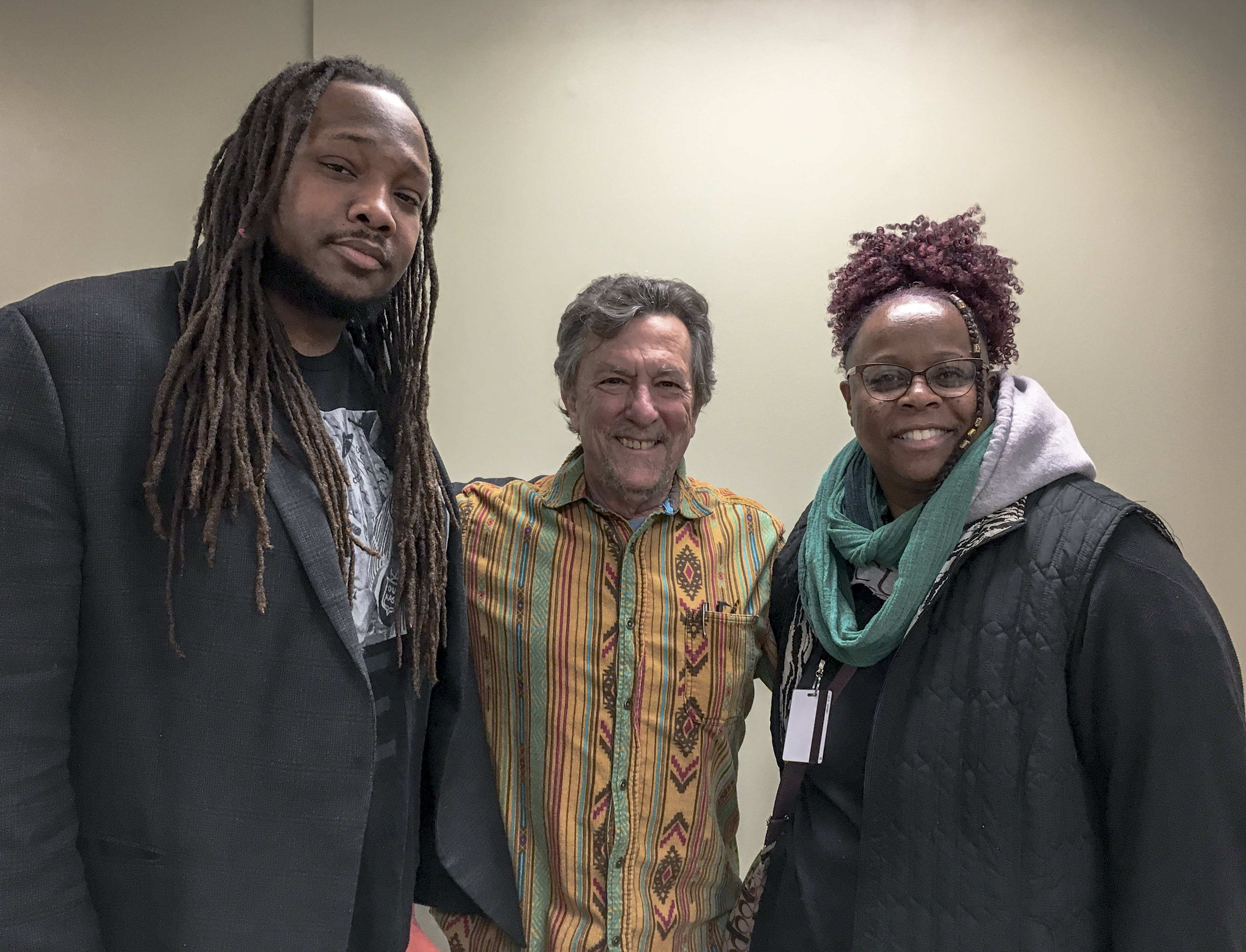
Podcast: Play in new window | Download
Subscribe: RSS
 January 23, 2015 – Segment 1
January 23, 2015 – Segment 1
Happy Friday, everyone! We begin our show with a special historical piece produced by Marc Steiner Show producer Stefanie Mavronis: Confederate Monuments in Baltimore.
Partial transcript included below.
If you recognize that tune, you know it’s Dixie, the unofficial anthem of the South. That song actually began as a minstrel song, written around 1859 by Daniel Decatur Emmett as a reaction to the growing abolitionist movement in the United States. There are a lot of different lyrics that are associated with Dixie, but they all imagine former slaves wishing they were back in the South, back working on the plantations, to live and ultimately die in Dixie.
It was one of President Lincoln’s favorite songs; he played it during his campaign and even after the end of the Civil War. But we remember it as a secessionist anthem, and that’s still its legacy today. After President of the Confederate States of America Jefferson Davis used it at his inauguration, it became the de facto anthem of the South. Allegedly, Daniel Decatur Emmett, who wrote the song, said “If I had known to what use they were going to put my song, I will be damned if I’d have written it.”
That legacy aside, let’s go back to that original sound.
It was recorded over the Martin Luther King Jr Holiday Weekend at a Confederate Memorial Service to celebrate the birthdays of Confederate generals Robert E. Lee and Stonewall Jackson, which fall in January. You might expect that this audio comes from this year’s celebrations in Mississippi … or Alabama … or Viriginia, but no — this was smack dab in the middle of Baltimore City, where 63% of the population is Black, at the Lee-Jackson double equestrian statue on the outskirts of the Wyman Park Dell across the street from the Baltimore Museum of Art and Johns Hopkins University. It’s not completely unusual that this service takes place in Baltimore when you look at Baltimore’s position in the Civil War. Baltimore was deeply conflicted as a major city in a border state. It was below the Mason-Dixon line, in a state that never seceded but one with a lot of Southern sympathies that lived on beyond the end of the Civil War, especially in Baltimore, the Eastern Shore and Southern Maryland. There was a home for retired Confederate soldiers in Pikesville that just closed in 1932. And, the original lyrics of the Maryland State anthem call President Lincoln a “Vandal” and include the call: “Huzza! We spurn the Northern scum!”
Today in Baltimore, we have Robert E. Lee Park. And of the city’s four Civil War monuments, three are Confederate. There’s the Lee-Jackson double equestrian statue I just mentioned in Homewood. There’s also the Confederate Soldiers and Sailors Monument — sometimes called The Spirit of the Confederacy — in Station North across from MICA, dedicated merely 40 years after the end of the Civil War. Thousands of Baltimoreans gathered and wept at its dedication ceremony. And there’s the Confederate Women’s Monument at North Charles and University Parkway, right on the other side of the Johns Hopkins campus. And finally, there’s Baltimore’s lone monument dedicated to the Union: the victorious Union Soldiers and Sailors statue, located right across Wyman Park Dell from the Lee-Jackson statue in Charles Village. And that lone Union statue was the only Civil War monument that the City of Baltimore officially endorsed and paid for.
Now let me talk about this Lee-Jackson statue on Art Museum Drive. It’s an impressive statue. There’s Robert E Lee on his horse Traveller riding next to Stonewall Jackson on his horse Little Sorrel. It was paid for by money that Baltimore Colonial Trust Company banker J. Henry Ferguson left in his will to construct a monument to his two childhood heroes. He ordered the inscription read “They were great generals and Christian soldiers and waged war like gentleman.” What may be most shocking about this particular monument is that it was dedicated so recently in our history — in 1948. The statue was supposed to be created in 2 years, but a shortage of Italian clay and limitations on metal during wartime caused it to take sculptor Laura Gardin Fraser a decade longer. On that day in 1948 when it was memorialized, 3000 Baltimoreans were there, including the grandchildren of Lee and Jackson, Maryland Governor William Preston Lane, Baltimore Mayor Thomas D’Alesandro, and his young daughter and future United States House Speaker Nancy Pelosi.
So every year since its dedication, family members of Confederate soldiers join at the monument for the purposes of honoring their relatives and the leadership of these Confederate generals here in Baltimore. Here’s a direct quote from their bulletin promoting the event this year: “This is your opportunity to show the Confederate colors in a positive and honorable way. PLEASE BRING EVERY CONFEDERATE FLAG YOU OWN.”
So, I went with my fellow producer Mark Gunnery to the Confederate memorial service because we heard about a counter protest and silent vigil that was taking place there, led by the Baltimore Quaker Working Group on Racism. We talked to people standing on both sides of Art Museum Drive about why they were spending their Saturday morning outside at this monument.
[Interviews]
How did those people memorializing their Confederate ancestors across the street react to all of this?
[Interviews]
And that’s the argument laid out. And it hinges on two main questions: 1. Should Baltimore City be home to Confederate monuments at all? Should the city knock down statues like the Lee-Jackson monument, or — are they an important relic of our history that we can all learn from? and 2. Not only how do we tell and remember our history, but how do we interact with it and interpret it? I understand why the people who were out there at the Lee-Jackson memorial wanted to honor and remember their ancestors for the sacrifices that they made. They may have been the losers, but the reality is that most of those who fought on behalf of the South in the Civil War weren’t slaveowners. But they were largely fighting on behalf of wealthy slaveowners for their right to continue to own slaves and the industries that sustained the South economically. And the fact is, in the South, poor whites aspired to be wealthy and own slaves, an idea that TaNehisi Coates mentioned in his Loyola address earlier this week.
TaNehisi Coates also said this about the Confederate flag in an essay, “It’s not simply that the flag is offensive. It is that it is the chosen symbol of slaveholders and those who wanted to live in a republic rooted in slaveholding.” I don’t think that that the Confederate flag can be separated from that history.
Personally, I don’t think the City should tear down the Lee-Jackson Monument or the other Confederate monuments in Baltimore. But I do think people should know that Baltimore City is home to 3 confederate monuments out of 4 Civil War monuments total, and I do think that these monuments lack context. Baltimore was a deeply conflicted place in the Civil War. While Confederate flags are common throughout Southern and rural Maryland, I think Baltimoreans like to see themselves as Northerners. But we weren’t, and these monuments display that. For me, that history is relevant to Baltimore today and we shouldn’t forget it because it’s uncomfortable, and we should be aware of how that legacy plays out in 2015 and each year on Martin Luther King Jr. weekend at the Lee-Jackson equestrian statue.
For the Marc Steiner Show and Your Source for Cool Jazz and More WEAA 88.9FM, the voice of the community, I’m Stefanie Mavronis.
(To learn more about these monuments and others in our city, check out Dr. Kate Drabinski’s Indypendent Reader article, Cindy Kelly’s Outdoor Sculpture in Baltimore book, and the Monument City website.)


 January 23, 2015 – Segment 1
January 23, 2015 – Segment 1

